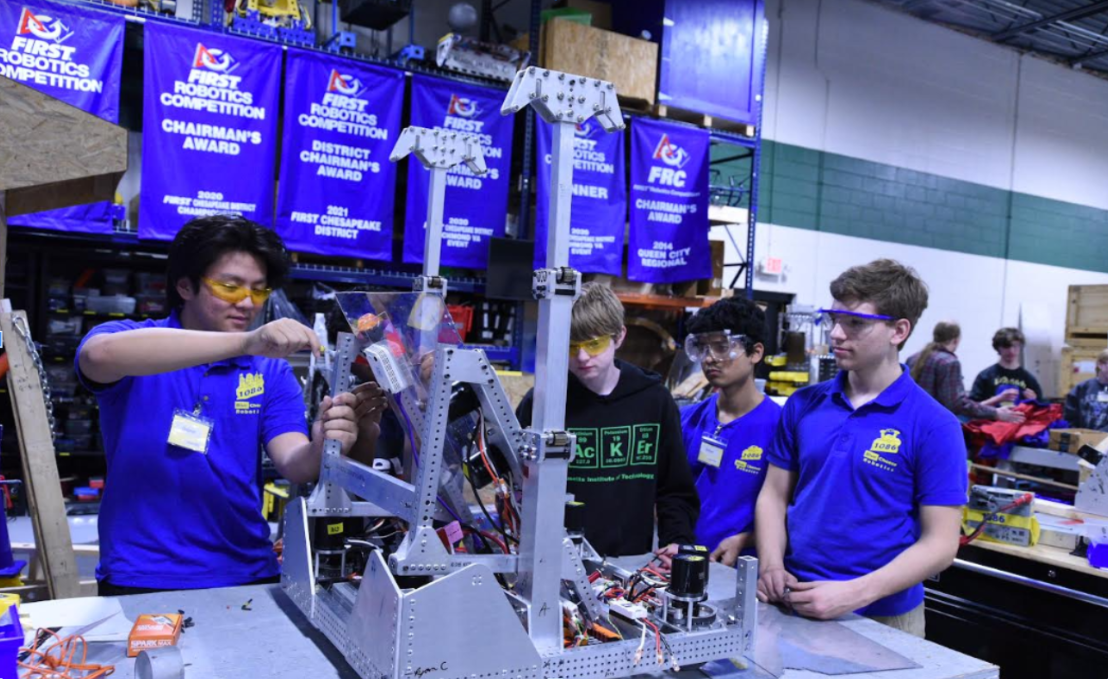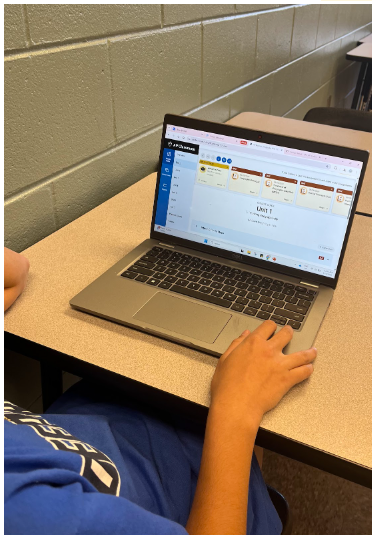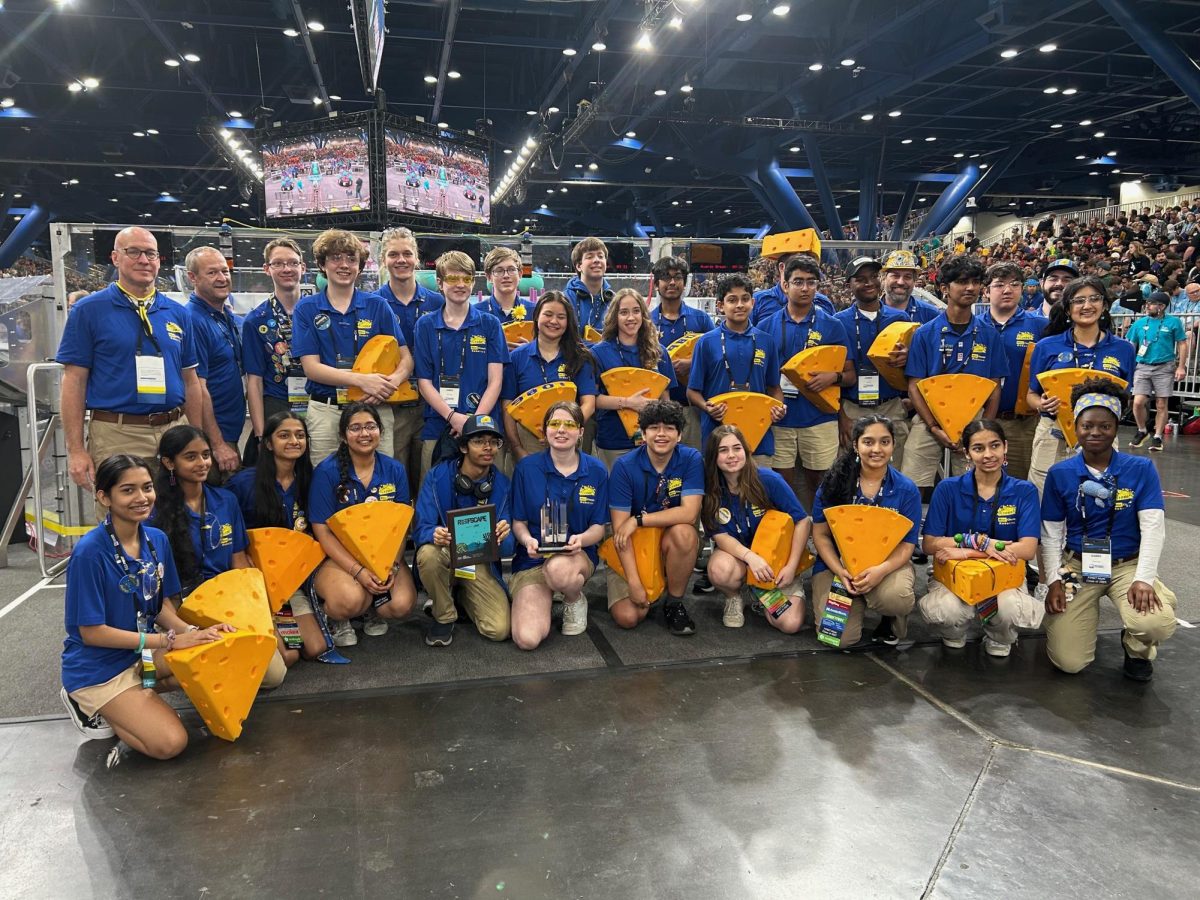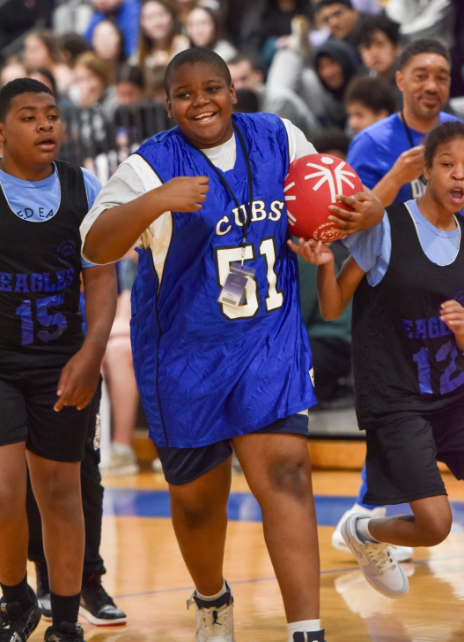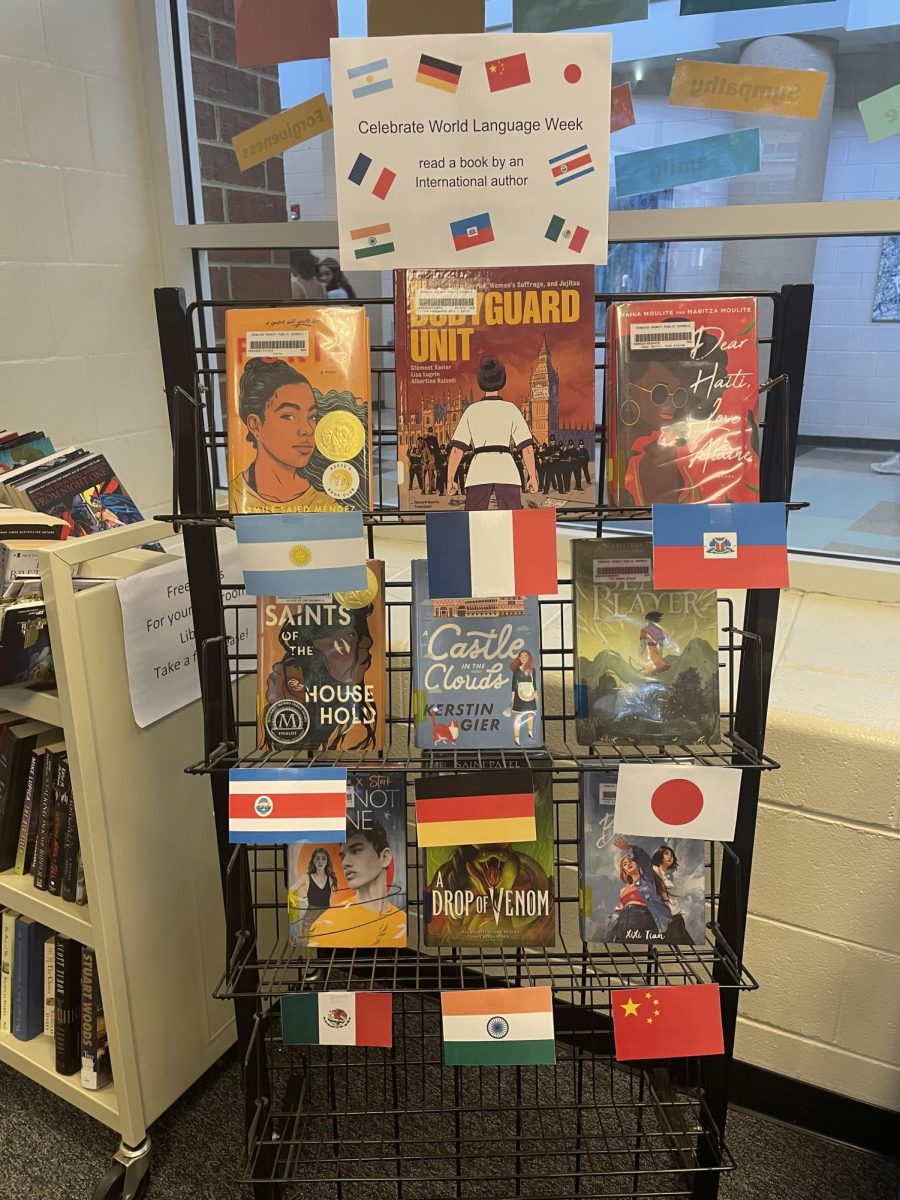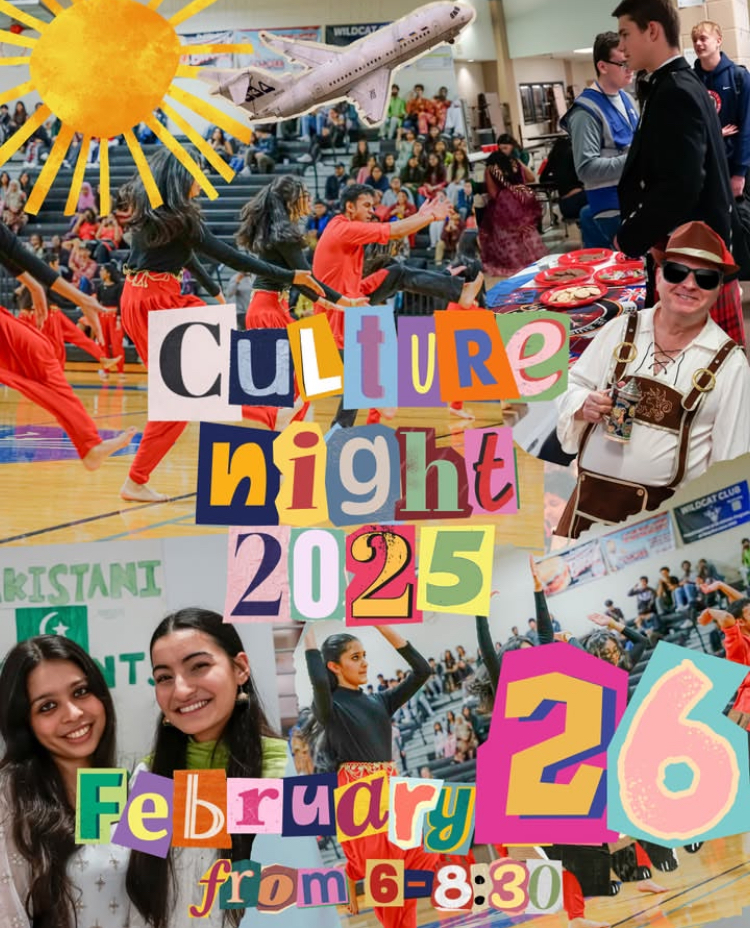Coming to the end of the 2024 robotics competitive season, Deep Run Robotics team Blue Cheese ended with a third place finish in the FIRST Chesapeake District Championship.
Although they didn’t get first place, the team still ended with a win for their outstanding performance, awarding them the FIRST Impact Award. This award is the most prestigious award in the program that honors the team that best represents a model for other teams to emulate and best embodies the mission.
Each season, the teams receive a challenge in January and then have eight weeks to work on the challenge, by creating a prototype and design, fabricating the parts, assembling, programming, and then practice driving. For many students on the team, the fast pace can be intense.
“It’s fast and it’s intense, but this [season] is probably one of our better seasons in recent memory, since 2020,” junior Apoorva Saurav said. “We took into account where we were as a team, and because of that we were able to get relatively close to where we wanted to be by our first competition, so that put us in a good spot to actually compete.”
Despite the continued success of Blue Cheese, many readers might still be asking, what does the robotics team do, anyway?
“We build a robot and compete against 108 other teams in the district, and we’re just given a specific task every year to perform,” Robotics coach Matt Wilson said.
“When people hear robotics team they get the sense that it’s small like in the movies, but our robot is currently 117 pounds before you add the battery and protective bumper. It is big, they go fast, and creating a robot at that scale is something cool to make,” Saurav said.
But the team does much more than build robots and compete.
“We do a bunch of outreach activities for students and kids in our community. We advocate for our community leaders, school leaders, our county leaders, and our state leaders to improve STEM education and access for all students and essentially try and have fun while we do it,” Wilson said.
With such a large number of students on the team, communication is important to the their success.
“We have a pretty large team, I think we’re at 60 or 70 people. It’s just a lot of working with people who share your skill set, working with people who don’t share your skill set, and communicating the challenges between those different teams,” Saurav said. “I have to have a programmer talk to me because I’m going to be designing the stuff he needs to control, so like making sure we’re communicating between those groups even though we don’t have the same skillset to make sure we meet what is important for each other.”
When it comes to this year’s competitions, the team established some goals to ensure their success.
“We want to make sure that we don’t overextend ourselves or go for an over-ambitious design,” Wilson said. “This season we went into it with the mindset that we just want to do something simple and execute it well, and that worked out well for us because we got third in both our qualifier events.”
However, behind the performance, there are many different parts that make up the team, and students work together to make it come together. With so many moving parts, this can bring together the team, but it can also create some conflict.
“There’s a lot of stress in this, there’s a lot of high stakes for the kids; they want to win and sometimes that energy level and expectation and the resources and ability for us to get to that level don’t mix,” Wilson said. “Sometimes our feelings get hurt, but it’s being able to cope with those feelings, manage feelings of other people, and still work as a team, that’s something that we do pretty well.”
Even though students face hardships, being part of a team is something that they enjoy.
“Being able to go to competition is probably the most exciting part. Seeing the robot perform is pretty exciting,” sophomore Rowan Rees said.
Saurav enjoys being able to see other teams’ work at the competitions.
“Going to competition and being able to see how other teams approach the same design challenge between relatively the same constraints.” Saurav said.
For Wilson, the best part of coaching the team is the students who make up Blue Cheese.
“My students always think that the team is designed to build robots, but the team is designed for the robots to build the kids,” Wilson said.

